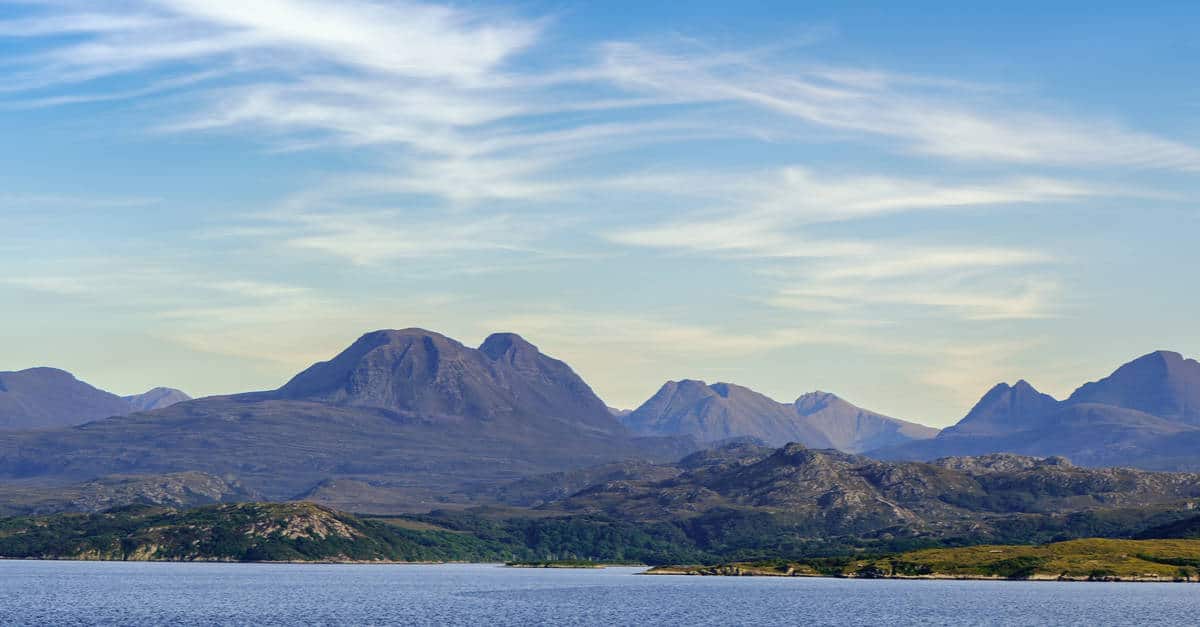When it comes to hiking in Scotland, its absolute pinnacle is undoubtedly Munro bagging. Although this activity means leaving the safe low-level trekking trails behind you, a lot of outdoor enthusiasts have Munro Bagging as their favorite pastime.
In this article, I’ll take a closer look at Munro bagging. Keep reading if you’re ready to aim for higher peaks and you’ll find everything you need to know as a Munro bagging beginner.
The Overview
Munro bagging got its name after Sir Hugh Munro, a British mountaineer who, in 1891, created a list of the 282 highest mountains in Scotland. Climbing one of these mountains means “bagging” it. Therefore, folks who are “Munro baggers” are passionate explorers who want to climb as many of these summits as possible.
Bagging a Munro means enjoying absolutely stunning views of the Scottish landscape, so getting to the summit of one of these mountains is certainly worth the effort. While some of these peaks can be reached only if you possess advanced climbing skills, some are pretty straightforward to complete. Whatever the difficulty, reaching the top of a Munro (“bagging it”) brings the feeling of achievement that is very hard to match.
There are countless aspiring trekkers in the UK (as well as around the world) who want to become Munro baggers. However, a lot of these beginners don’t actually know where and how to start. If you’re one of them, have no worries – we’re here to help you out:
Frequently Asked Questions About Munro Bagging
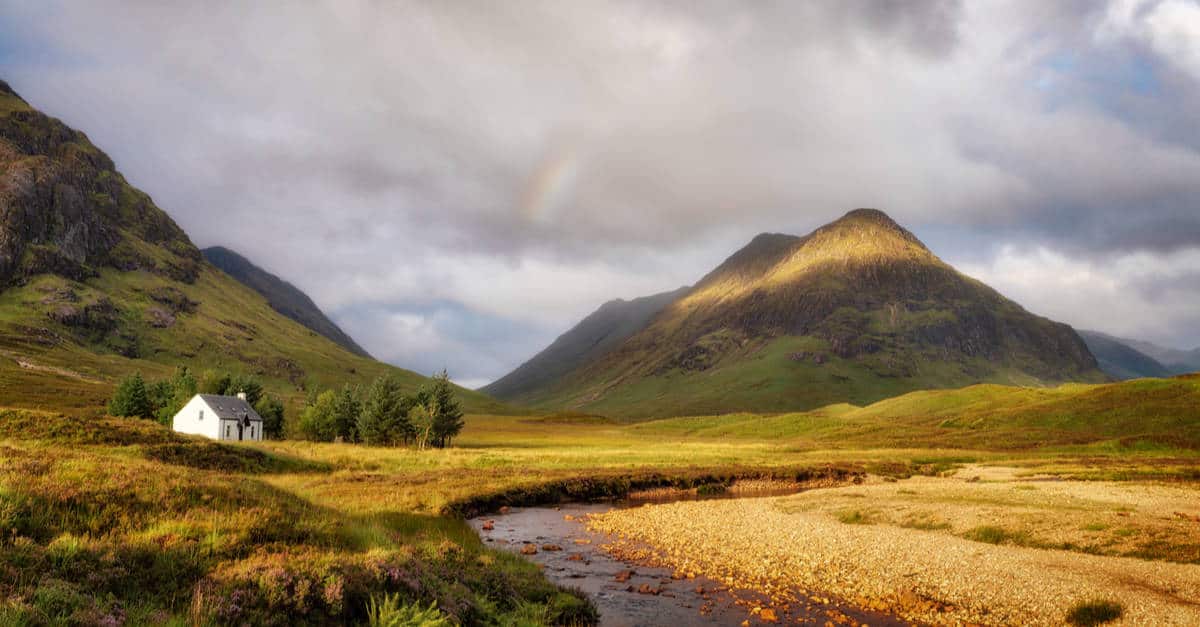
What’s a Munro?
This would be a mountain in Scotland whose height stands at over 3,000 feet.
However, Munros are not the only type of Scottish mountains. Other categories include Marilyns, Donalds, Grahams, and Corbetts, with specific rules that put mountains into these categories. For example, Corbetts are Scottish mountains with a drop of at least 500 feet and a height of between 2,500 and 3,000 feet.
How Many Munros are There?
In Scotland, there are 282 Munros and 227 subsidiary summits. One peak that was originally included on the list but got demoted a decade ago is Beinn a’ Chlaidheimh, located near Ullapool’s port village.
As it turned out, the height of this mountain stands at 2,999 feet – it is only 1 foot short of being a Munro.
Where are the Munros?
These peaks can be found all over northern and central Scotland, with the northernmost one being Ben Hope (in Sutherland) and the southernmost one being Ben Lomond (on Loch Lomond).
Most of these mountains can be found in the northern and central Scottish Highlands. However, a lot of them are also located in eastern Scotland, in the Cairngorms National Park, where there are more than 50 Munros.
When it comes to Scottish islands, on the other hand, Munros can be found on only two – Isle of Mull with 1 Munro and the Isle of Skye with 12 Munros.
Which of the Munros is the Tallest?
This one is a no-brainer – the tallest Munro is at the same time the United Kingdom’s highest mountain. Located near Fort William in the Scottish Highlands, Ben Nevis stands as the country’s highest mountain and the tallest Munro of them all, at 4,411 feet.
Did Anyone Manage to Bag all the Munros?
Believe it or not, the number of outdoor enthusiasts who have climbed all of these mountains is counted in thousands. There are around 6,000 people who have managed to bag all 282 Munros.
Out of these people, Stephen Pyke is the fastest. In 2010, he bagged all the Munros in less than 40 days, which is a seriously impressive feat.
How to Plan for a Munro
The trails that lead to the highest mountains in Scotland range from rugged or almost non-existing routes to paths that are clear and exceptionally easy to follow. Unlike many mountain trails in, for example, Canada or Austria, the ones in Scotland are rarely signposted – not every Munro will have a clear, easy-to-follow trail.
For that matter, it is crucially important to take planning for a Munro-bagging trip very seriously. Before attempting to climb one of these mountains, outdoor enthusiasts need to do their research, no matter how experienced they are.
WalkHighlands
One of the best existing resources for planning walks and hikes in Scotland is WalkHighlands. This free-to-use website has all the necessary info on hundreds of different routes in Scotlands, including the ones that lead to the summits of the Munros. Each of these includes:
- The profile of the route
- The difficulty grade of the route
- The elevation, duration, and length of the route
- The information about public transport and car parks
- The links to starting points on Google Maps and to walk reports by the website’s registered members
- The correct pronunciation of the places you’ll pass by while hiking
- The bog factor & photos of the route
Munro Guidebooks
Fortunately, there are quite a few books on Munro bagging. Some of the best ones include:
- The Munros
First published all the way back in 1985, this is one of the best-selling books on the Munros. The revised edition comes with enhanced images and an entirely new set of detailed maps.
- The Munros: The Complete Collection of Maps
As its name suggests, this is a collection of detailed maps of all the Munros in Scotland. It was written by Harvey Maps (a fitting surname) and is a genuine feast of topographic delight for map lovers.
- The Munros: Scotland’s Highest Mountains
This book was written by one of Scotland’s most famous mountain walkers and wilderness hikers – Cameron McNeish. This is a stunning piece of work in every sense of that word and one that can come in very handy to experienced climbers and novice walkers alike.
- The Munros: A Walkhighlands Guide
Written by Paul Webster, this book provides fabulous accounts of routes on all 282 Munros in Scotland. It contains detailed maps and route descriptions – just what you need for your Munro adventure.
- Walking the Munros
Authored by Steven Kew, “Walking the Munros” is actually a two-part set: the first volume covers the Southern, Western, and Central Highlands, while the second volume covers the Cairngorms and the Northern Highlands.
How to Plan a Trekking Route
Checking up routes on the website mentioned above or in one of the Munro guidebooks is the bare minimum of preparation anyone should do if they’re planning to tackle one or more of these mountains.
To properly plan your Munro bagging route, however, you will have to do a bit more research:
Pay Attention to the Weather
One extremely important thing you’ll have to do is check a few different weather forecast services up until the day of your trekking adventure. Once you know what the weather is going to be like, you’ll be able to pack your backpack accordingly.
Browse Walk Reports
Reading up on people’s experiences of bagging the Munros can be of great help, especially if these walk reports are recent. They usually provide useful tips for the hikes.
Thoroughly Analyze the Trail on the Map
Another important step in the preparation for Munro bagging is getting a sense of the route by analyzing it thoroughly on the map. Learn about the terrain along the trail and identify steep sections by looking at the contour lines. Also, make sure to measure the entire distance of your trip and determine how much time you’ll need to complete each section of it.
What Skills Do I Need for Munro Bagging?
As we already said, the trekking trails up the Munros range from highly technical routes for skilled mountaineers to straightforward paths that can be traversed by essentially anyone. Therefore, it is no wonder that different Munros require different sets of skills in order to be climbed upon. It goes without saying, but the most advanced trails should not be attempted by those who don’t possess the necessary skill set, confidence, as well as experience.
Still, there are a couple of skills that both the beginners and experienced mountaineers need to possess for a successful Munro-bagging adventure, and these include:
Knowing Your Abilities & Limitations
Those who intend to do some hiking and climbing in Scotland should know that the most crucial skill they need to have is knowing their own abilities and limitations. What some outdoor enthusiasts see as a really difficult hike will be seen as a mere walk in the park by others, and vice versa. To put it simply, there is no such thing as the definition of a trekking route’s objective difficulty – it’s all up to the individual.
Those gearing for their very first Munro bagging adventure should definitely have at least a couple of hiking trips under their belts. Previous trekking experiences show a person what he or she is capable of, what kind of areas they’re more familiar with, what they’re comfortable with, and how far they can walk.
One extremely important thing for beginners is to choose a Munro that matches their abilities and which is within their comfort level. Once you complete a Munro or two, you’ll start to slowly stretch this comfort zone by gaining more and more experience. But still, remember to choose only those Munro hiking/climbing routes that you’re absolutely sure you can complete.
Map Reading & Navigation
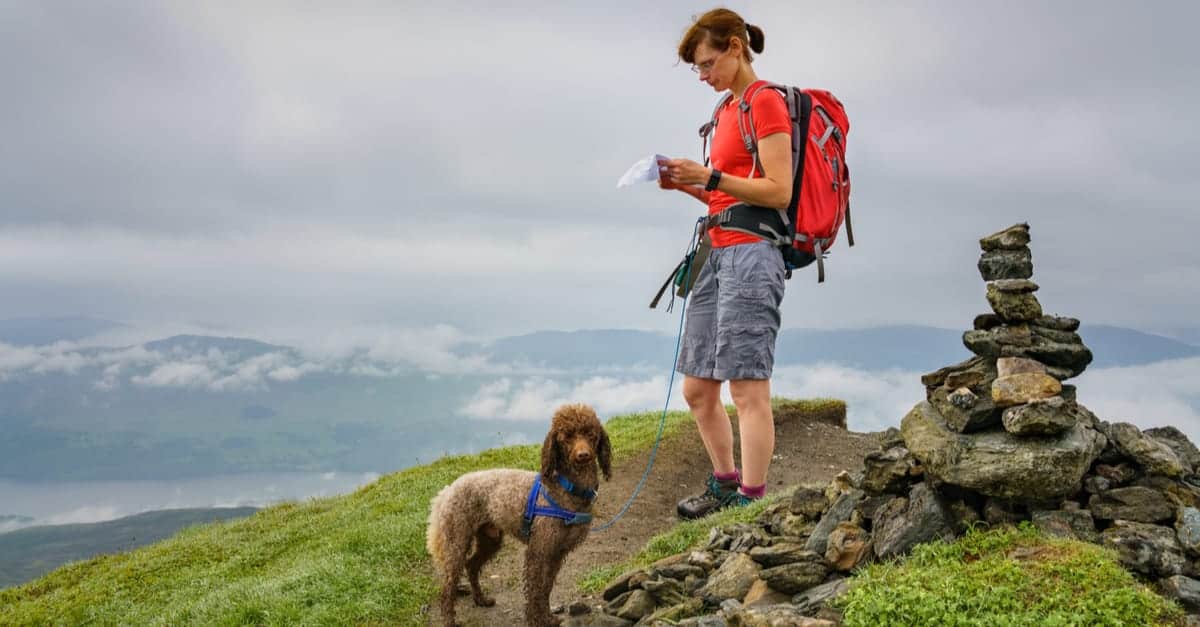
Even those who opt for a Munro with a clear, straightforward trail that they’ll be traversing with the help of a planning app should still be familiar with map reading and compass use.
Think of it like this – what if the weather suddenly changes and you have to deal with zero visibility? What if your GPS device fails? What if the battery in your smartphone runs out of juice? One thing is certain, and that’s that you wouldn’t be the first outdoor enthusiast lost in the middle of nowhere without knowing how to navigate in rapidly changing conditions.
You need to always be prepared to navigate in an old-fashioned way. Keep in mind that weather in mountainous regions like the Scottish Highlands can change very quickly, even on bright, sunny days.
Fortunately, learning basic navigation has never been so easy – there are numerous resources out there, from massive books to YouTube videos. And don’t forget to try out everything you learn from these resources – theory and practice and two completely different things.
Fitness Level
Climbing the Munros can be difficult. If we imagine a difficulty scale that goes from 1 to 5, with 1 being a walk in the park and 5 being an extremely challenging climb, most Munros will be somewhere at number 3.
Still, that doesn’t mean that a keen trekking enthusiast needs to possess a particular level of fitness in order to be able to bag a Munro. In fact, there are quite a few lower hills in Scotland that are harder to hike over than some of the easiest Munros.
With the exception of folks with trouble-causing injuries, anyone can bag a Munro.
How Do I Increase My Hiking Fitness Level?
- The best way to increase your hiking fitness is pretty obvious – by regular hiking.
- Get your feet used to the tension by going on long walks on different types of terrain.
- Engage in cardio sports, such as cycling or running, in order to build your endurance.
- To get your body used to all the gear you’ll be carrying while Munro bagging, always wear a backpack while walking.
Keep in mind that no one will ever be judging you. Accept the challenge because of yourself and enjoy spending time outdoors!
Scrambling
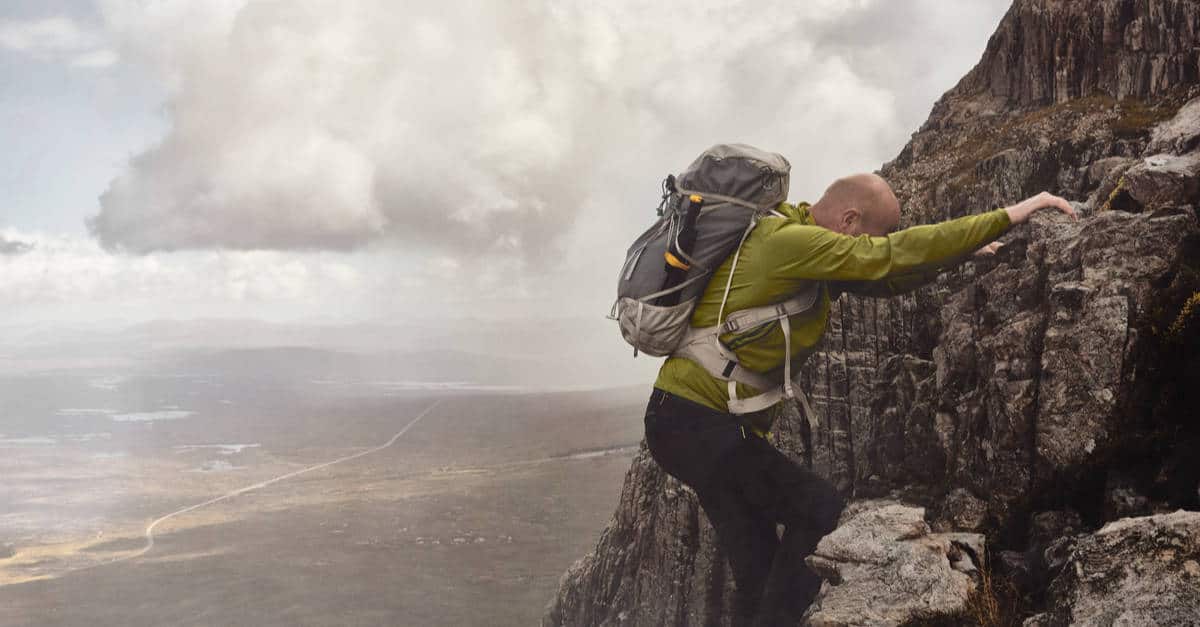
A lot of the Munros do not require scrambling at all. Therefore, this is not one of those skills you’ll need if you’re a beginner and you’re planning to hike only the more straightforward Munros. However, as you’re gaining more experience and tackling Munros that are progressively more challenging, scrambling will become a must-have skill.
One of the best ways to become familiar with this activity is by doing some indoor rock climbing and bouldering. Once you gain enough confidence, tackle a Munro with scrambling sections to try your hand at this activity in real life. However, in case you don’t gain enough confidence but still want to tackle a Munro with short scrambling sections, your best bet is to hire a mountain guide or hike with an experienced friend before you attempt anything challenging.
Another thing to mention here is that the vast majority of these mountains do not require actual climbing with ropes. In other words, scrambling certainly isn’t something you need to worry about if you’re a complete beginner when it comes to Munro bagging.
Must-Have Gear for Munro Bagging
All hikers are different. Some carry more gear than others. Therefore, it’s all about determining what kind of a kit you need to feel prepared and comfortable for a day (or multiple days – check out the wild camping guide) in the wild. Here’s a list of items that most outdoor enthusiasts consider to be essential for a successful Munro bagging outing:
A Hiking Backpack
This one is a no-brainer – without a good backpack, you won’t be able to carry all of your gear. Go for a backpack with a volume of around 40 litres and which comes with features that provide additional support, such as the chest strap and the hip belt.
A Pair of Hiking Boots
Not wearing adequate footwear while Munro bagging is a recipe for disaster. Make sure to wear a pair of quality hiking boots with a good grip and ankle support.
Gaiters & Trekking Poles
When you’re Munro bagging mountains whose surroundings have a high bog factor, gaiters can come in very handy – they will protect your ankles from debris and water.
A pair of well-made trekking poles, on the other hand, can provide you with additional support. They can be particularly useful when you’re descending, as descents can be quite hard on one’s knees.
Food & Water
For a great Munro bagging experience, make sure to bring plenty of nuts and dried fruits (such as mango) as well as high-energy snacks (like protein bars). If you’re planning to eat sandwiches, make sure to prepare them at home – that’s not something you want to do in the mountains.
Choose food that’s easy to eat with only your hands. Sometimes, the conditions won’t allow you to stop and have a leisurely break. It goes without saying, but make sure to bring plenty of water, too.
Adequate Clothes
When it comes to clothes for Munro bagging, waterproof overtrousers and a waterproof jacket are a must – there’s a pretty good chance you’ll have to deal with rain during your adventure. Also, make sure that these garments are also sufficiently windproof.
Do not wear cotton t-shirts or jeans while Munro bagging – opt for quick-dry clothes instead. Furthermore, make sure to bring some warm layers with you. Even on warm days, chilly winds on high summits and exposed slopes can be quite troublesome. Bring a hat, a pair of windproof gloves, a puffy jacket, and a fleece layer.
Map, Compass & Whistle
As we’ve mentioned above, these items are absolutely essential, as well as the actual ability to use them properly. Don’t forget to carry a whistle, too – it could save your life in an emergency situation. A lot of the newer hiking backpacks come with whistles attached to their frames.
Other Emergency Items
Besides the whistle, make sure to carry anything else you may need in case of an emergency. This includes items such as the first aid kit, a bivy bag, an emergency shelter, and others.
Midge Repellent
Those planning to do some Munro bagging in the summer should also bring a midge repellent. These flying, biting insects can totally ruin your hike if you come unprepared. So, if your adventure takes place between May and September, make sure to bring adequate protection against these pests.
Keep in mind that this is a list of gear required for Munro bagging during the summer months. Engaging in this activity during winter is an entirely different story – you’ll need to bring extra equipment such as ice axes and crampons.
Which Munros are Suitable for Beginners?
As we’ve already mentioned, no two outdoor enthusiasts are alike. In other words, there isn’t a single difficulty ranking for the Munros that is applicable to all trekkers.
Still, a lot of folks who have already climbed some of these mountains agree that certain Munros aren’t difficult at all and can be tackled by complete beginners.
What Makes a Certain Munro Suitable for Beginners?
When choosing their very first Munro, hiking beginners should look for these characteristics:
A Region You’re Familiar With
If you’re from Scotland, your best bet is to choose a Munro in your region or one that’s closest to the region you live in. You’ll be familiar with the area and feel more comfortable in it.
A High Starting Point
Now, you may be wondering – why should I go for a Munro with a high starting point? It’s because hiking on these mountains means dealing with shorter ascents. In other words, you won’t have to gain as much elevation.
A Popular Hill
While it’s true that you should possess all the necessary skills for self-sufficiency in the wilderness, you should still go for a popular trail if you’re a Munro bagging newbie. On popular routes, there’s a much bigger chance of you bumping into other trekkers, who you will be able to ask for help, reassurance, or advice.
A Clear Path
This one goes without saying, but you should obviously go for a Munro with an easy-to-follow, clear trail. Leave the ones with scrambling sections for later, when you’re more experienced.
Beginner-Friendly Munros
Here are some Munros that are particularly suitable for those about to engage in this activity for the very first time:
Schiehallion
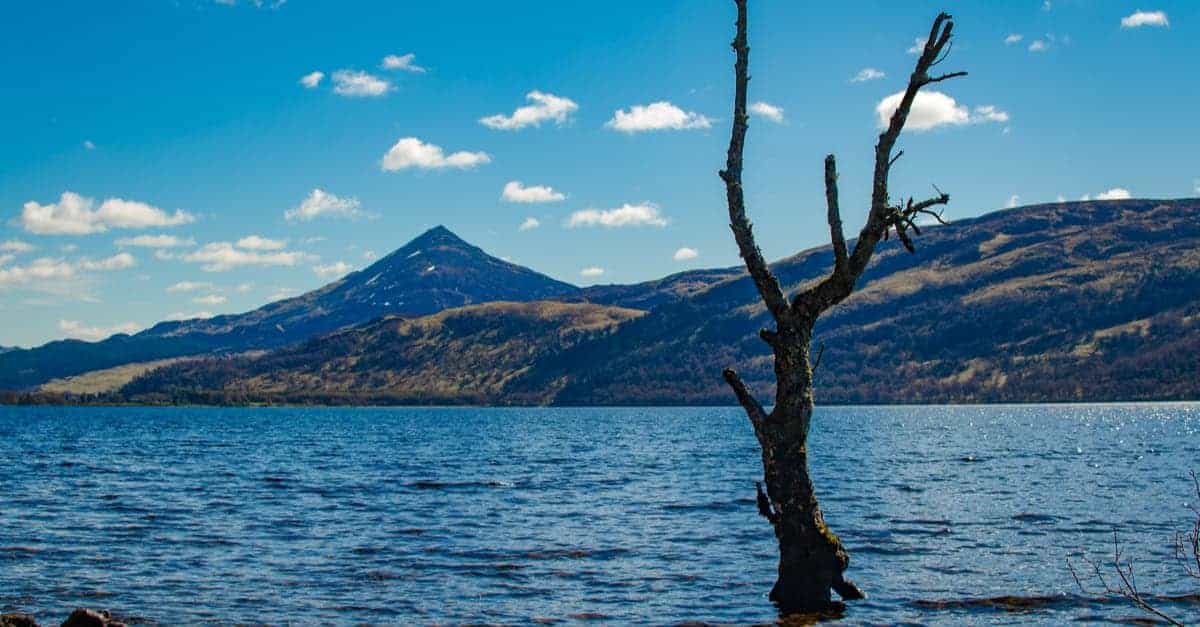
- Location: Perthshire
- Length: 6.25 miles
- Time: 4-6 hours
A lot of experienced Munro baggers consider this one to be the easiest. Besides the high starting point and the excellent trail, Schiehallion also provides phenomenal views.
Buachaille Etive Beag
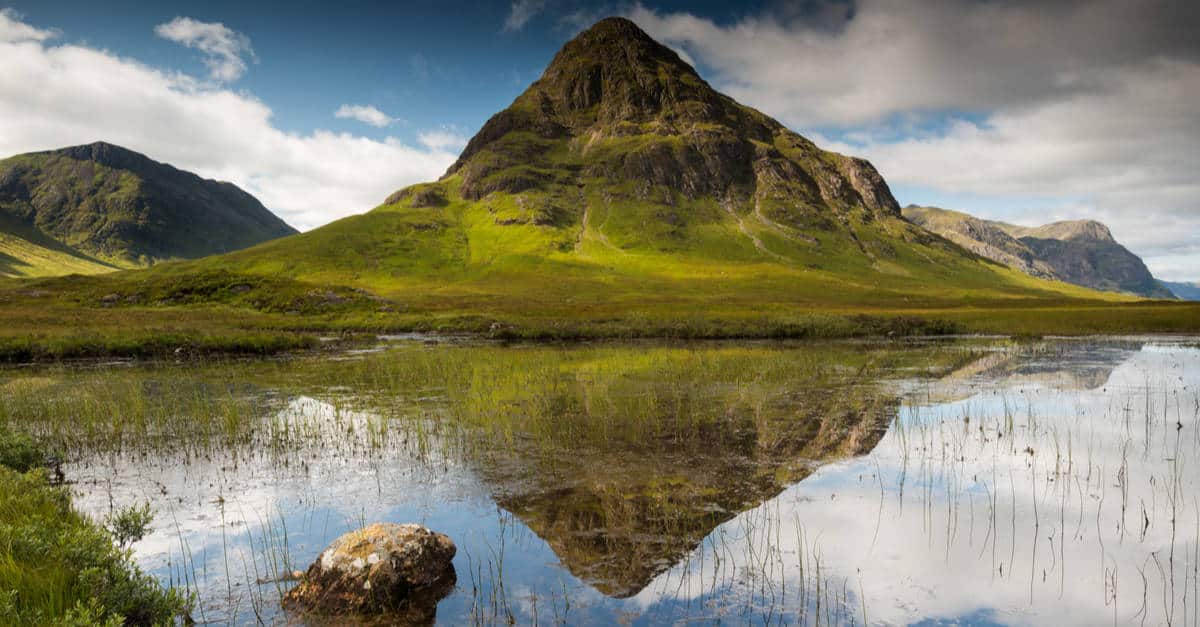
- Location: Glencoe
- Length: 5 miles
- Time: 5-6 hours
This is a very popular mountain with exceptionally easy terrain and a straightforward trail. However, the best thing about Buachaille Etive Beag is that it has two summits, allowing trekkers to bag two Munros in a single day.
The Lawers Range
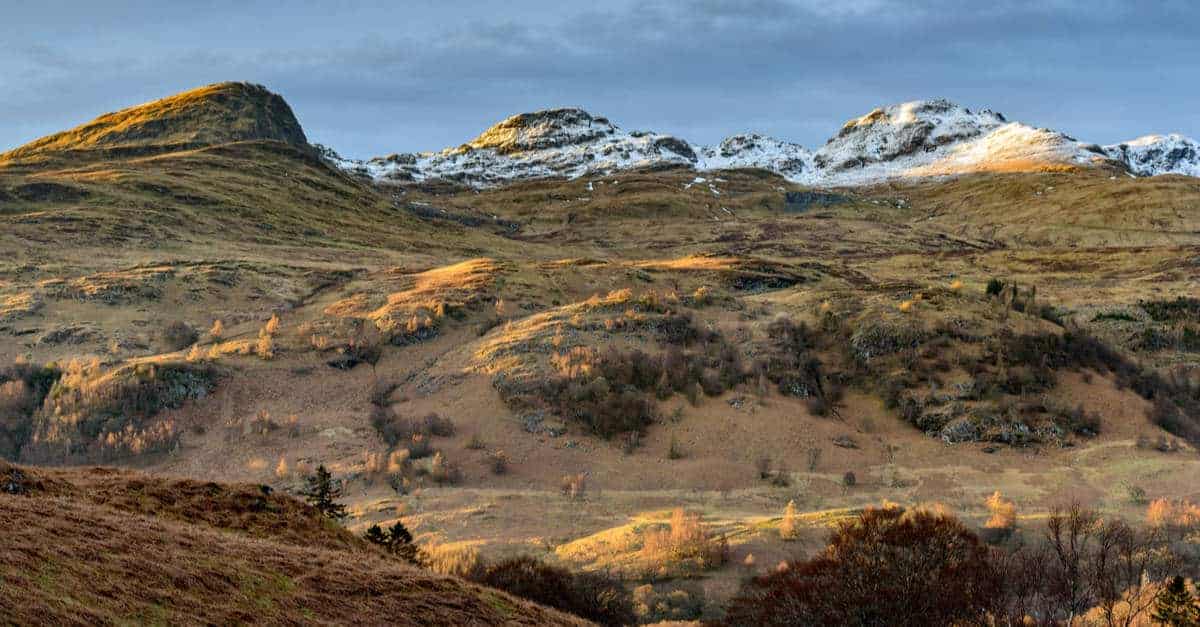
- Location: Loch Tay
- Length: 6.75 miles
- Time: 4-6 hours
Despite holding the status of the 10th highest mountain in Scotland, this Munro is actually quite easy to bag and is therefore very popular with Munro baggers. On the way to the top, you will bump into Beinn Ghlas, which is the second summit in this range and one that people rarely climb in its own right.
Beinn na Lap
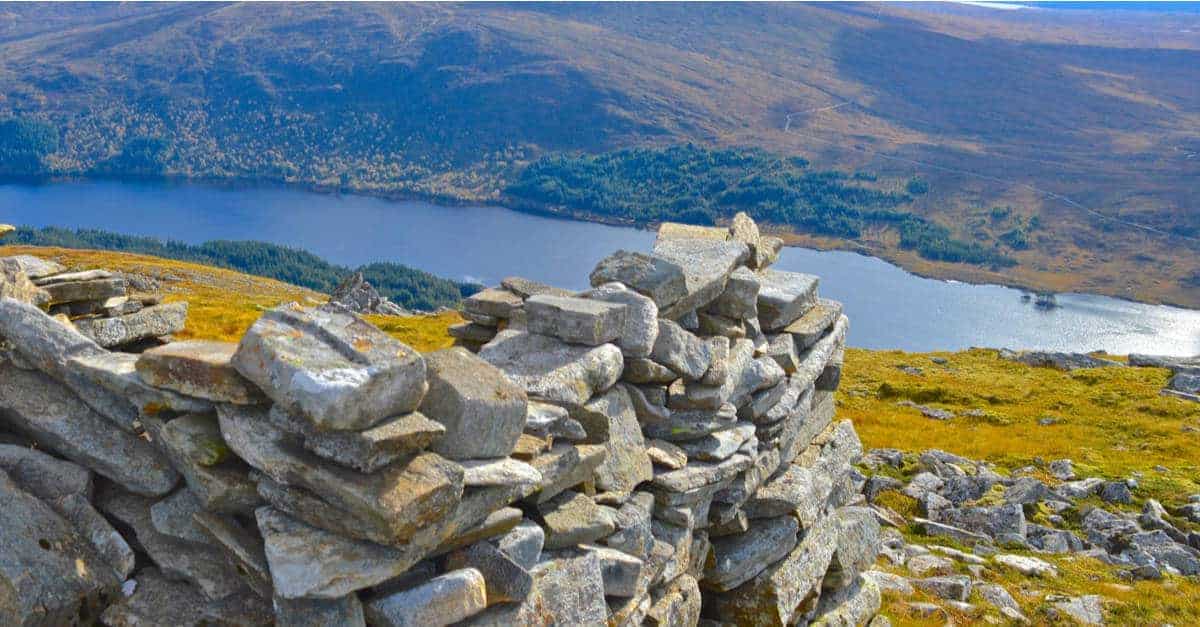
- Location: Loch Ossian
- Length: 6.25 miles
- Time: 3-5 hours
One of the most important things to know about this Munro is that it’s quite remote – the trail’s starting point can only be reached by train. However, this is also a high starting point, so you’ll have no trouble bagging this Munro.
Lochnagar
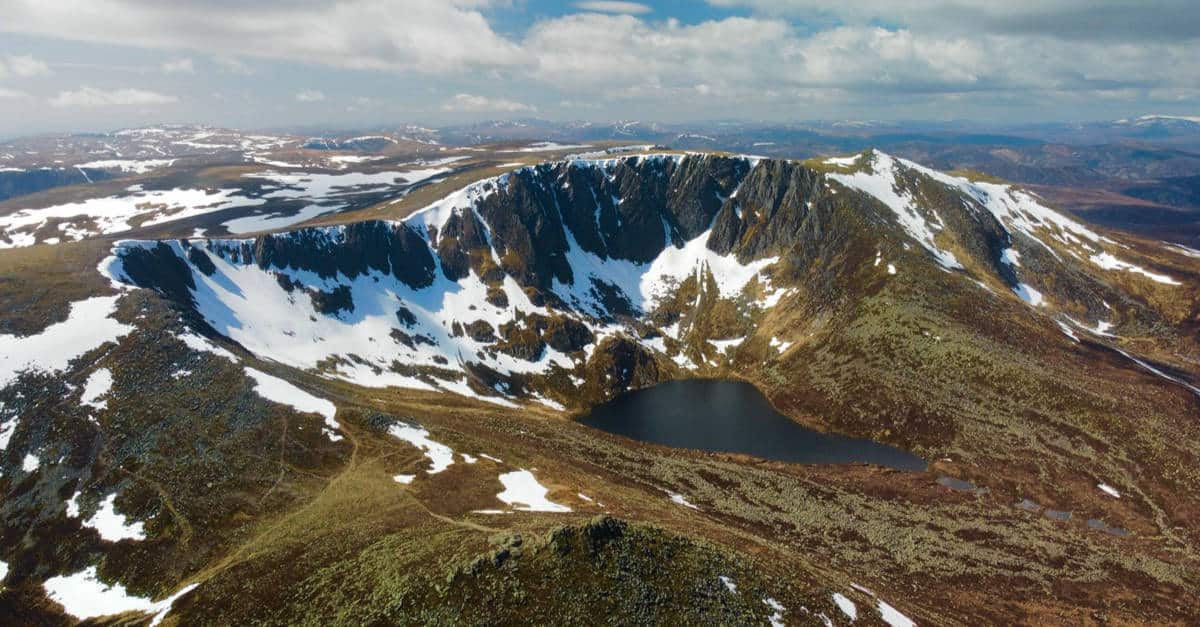
- Location: Braemar
- Length: 11.75 miles
- Time: 6-7 hours
While bagging this Munro takes significantly more time than bagging the ones mentioned above, this is a very popular mountain due to its location in the Cairngorms National Park. Climbing is easy-ish and you’re bound to bump into other trekkers on the way.
Ben Vorlich
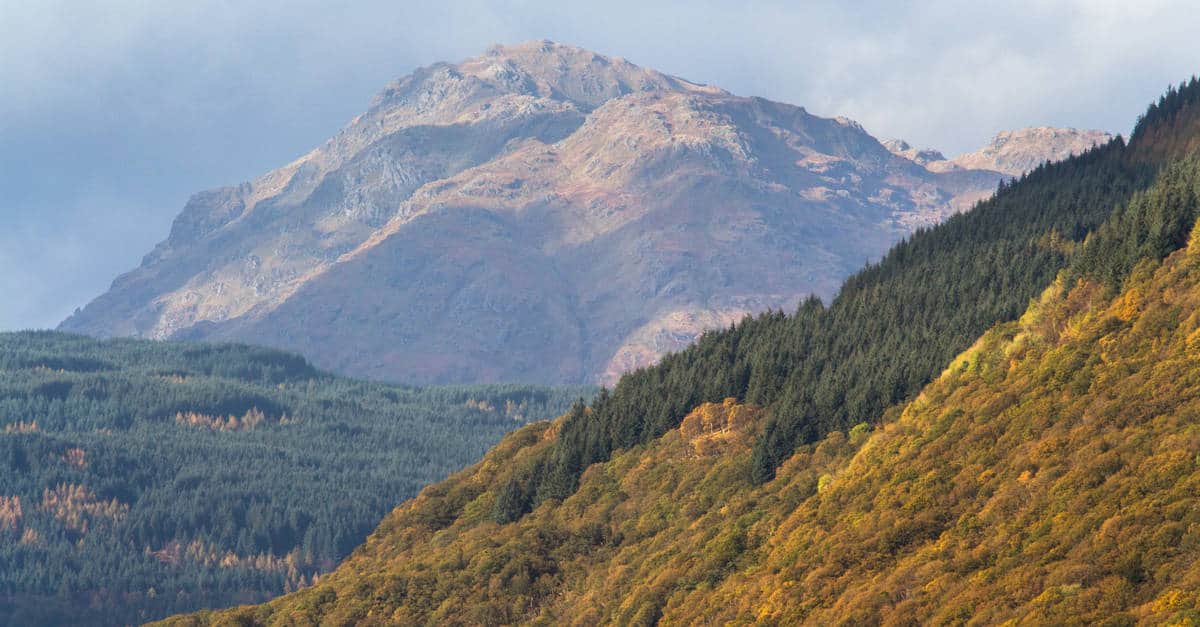
- Location: Loch Earn
- Length: 5.6 miles
- Time: 6-7 hours
Located in the famous Loch Lomond and the Trossachs National Park, Ben Vorlich is a very popular mountain. One of the best things about this Munro is that, upon bagging it, you can continue to the next one – Stuc a’Chroin – but this increases the total length of the hike to 9 miles.
The Cairnwell Munros
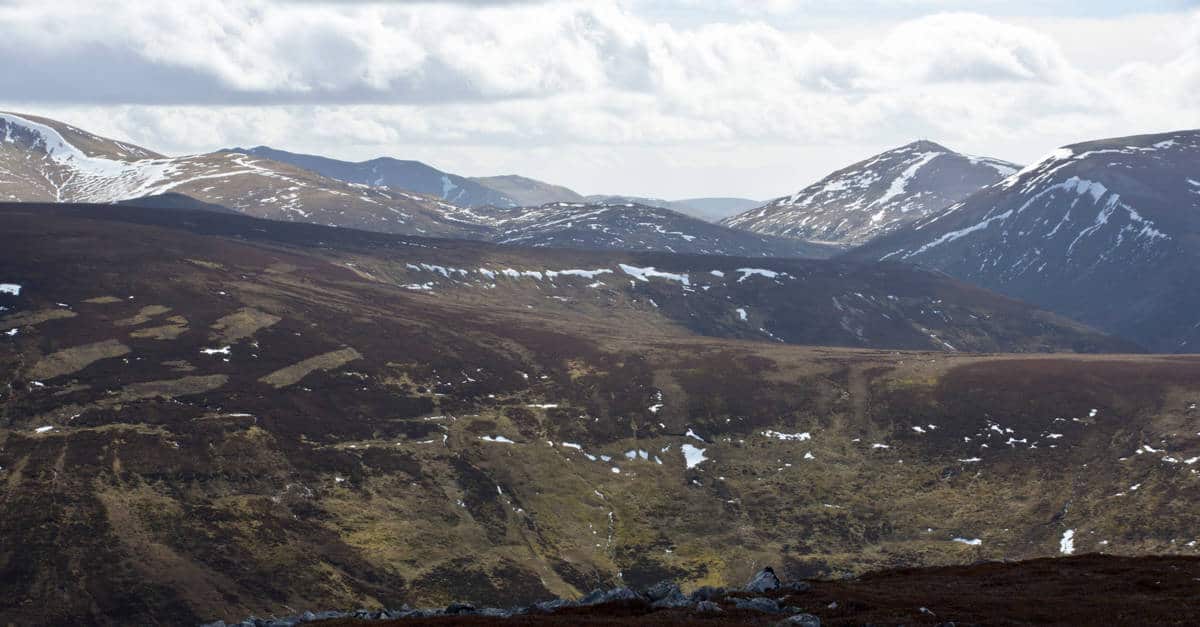
- Location: Glenshee Ski Center
- Length: 8 miles
- Time: 5-6 hours
The three Cairnwell Munros – The Cairnwell, Carn a’Gheoidh, and Carn Aosda – can all be bagged in a single day. They benefit from minimal descent between the peaks, clear paths, as well as high starting points.
Glas Maol Munro Circuit
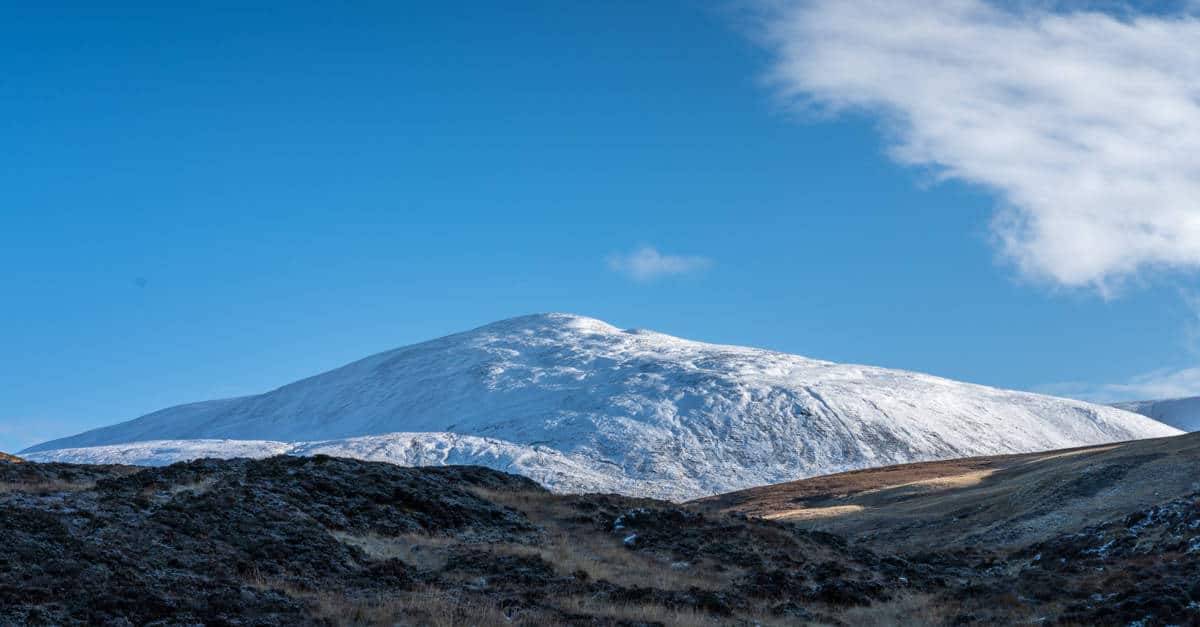
- Location: Glenshee Ski Center
- Length: 12 miles
- Time: 6-8 hours
The Glas Maol Munro Circuit consists of 4 Munros – Creag Leacach, Glas Maol, Cairn of Claise, and Carn an Tuirc – that are located on the other side of the popular ski center mentioned above. Since they’re higher and longer than the Cairnwell Munros, these summits should be tackled only by those who have completed a few of the easier Munros, like the ones listed above.
Check out my Southern Upland Way guide as well.
The Conclusion
Most hikers and trekkers agree that the best way to spend a holiday in Scotland is by engaging in Munro bagging. While this activity can certainly be quite intimidating at first, nothing will stand in your way if you obtain the right equipment and skills for it.
It is also incredibly rewarding – the gorgeous views of the Scottish landscape you’ll encounter while Munro bagging is not something you’re likely to forget anytime soon.

I love hiking, backpacking, and camping. From the Camino de Santiago to the West Highland Way in Scotland or simply a great day hike on the weekend. Hiking refreshes me, my mind, and keeps my body reasonably fit. So far I have walked three Camino routes and many other long distance hikes in the UK, Canada, and around the rest of Europe. One of the best was my hike up Ben Nevis.

